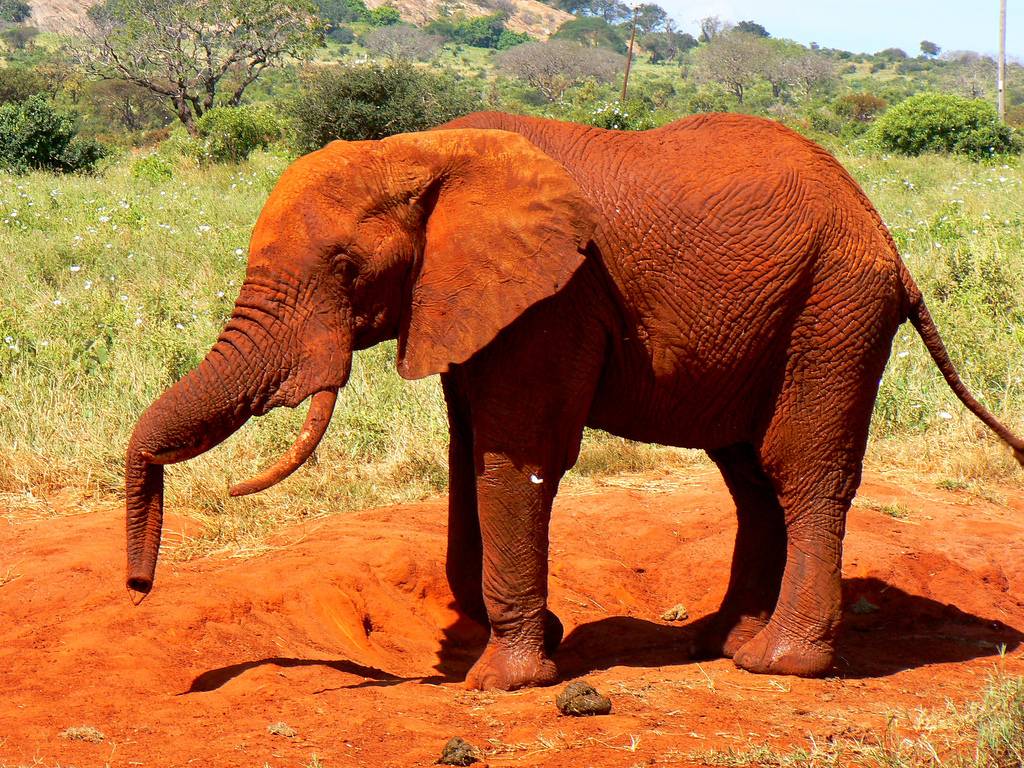Red elephants are intriguing creatures that capture the imagination of wildlife enthusiasts and researchers alike. Known for their unique reddish hue, these majestic animals are not only a testament to the diversity of the elephant species but also play a vital role in their ecosystems. In this article, we will delve deep into the world of red elephants, exploring their biology, habitat, conservation status, and the cultural significance they hold in various societies.
The red elephant, primarily found in certain regions of Africa, is distinguished by its striking coloration, which results from the iron-rich soil in their habitats. This article aims to provide a comprehensive overview of these magnificent creatures, shedding light on their behaviors, challenges they face, and the ongoing conservation efforts to protect them. As we explore this topic, we will also emphasize the importance of understanding the ecological roles these elephants play, which is crucial for their preservation.
In the following sections, we will break down the characteristics, habitat, dietary needs, conservation issues, and the importance of red elephants in cultural contexts. By the end of this article, you will have a deeper appreciation for these unique animals and the urgent need to protect their natural habitats.
Table of Contents
- Characteristics of Red Elephants
- Natural Habitat of Red Elephants
- Diet and Feeding Habits
- Conservation Status and Efforts
- Cultural Significance of Red Elephants
- Threats to Red Elephants
- The Future of Red Elephants
- Conclusion
Characteristics of Red Elephants
Red elephants are notably different from their gray counterparts, primarily due to their distinctive coloration. This reddish hue is attributed to the rich, iron-oxide soil found in their native habitats. Here are some key characteristics:
- Size: Red elephants can weigh between 4,500 to 12,000 pounds and can stand up to 13 feet tall.
- Coloration: Their reddish color serves as natural camouflage, helping them blend into their environment.
- Tusks: Red elephants often have larger tusks than other elephants, which they use for digging and foraging.
- Social Behavior: They are highly social animals, living in matriarchal herds.
Natural Habitat of Red Elephants
Red elephants primarily inhabit the savannas and forests of East and Central Africa. Their choice of habitat is crucial for their survival and well-being. The following aspects highlight their natural habitat:
- Geographical Range: They are predominantly found in regions such as Kenya, Tanzania, and parts of Uganda.
- Soil Composition: The iron-rich soils contribute to their distinctive coloration.
- Water Sources: These elephants thrive near rivers and lakes, which provide essential drinking water.
Diet and Feeding Habits
Red elephants are herbivorous and have a diverse diet that includes:
- Grass, leaves, and bark from trees.
- Fruits and tubers, which are essential during certain seasons.
- Roots and shrubs, which they dig out using their tusks.
Their feeding habits play a crucial role in maintaining the balance of their ecosystem, as they help in seed dispersal and controlling vegetation growth.
Conservation Status and Efforts
The conservation status of red elephants is a significant concern. They are classified as vulnerable due to various factors that threaten their survival:
- Poaching: The illegal hunting of elephants for their tusks is a major threat.
- Habitat Loss: Deforestation and human encroachment lead to loss of habitat.
- Climate Change: Altered weather patterns affect their food sources and drinking water availability.
Conservation efforts include anti-poaching initiatives, habitat restoration projects, and community education programs aimed at promoting coexistence between humans and elephants.
Cultural Significance of Red Elephants
In many African cultures, red elephants hold a special place in folklore and traditions:
- Symbol of Strength: They are often seen as symbols of strength and wisdom.
- Mythology: Various tribes have myths that revolve around elephants, attributing them with spiritual significance.
- Tourism: They attract tourists, providing economic benefits to local communities through wildlife tourism.
Threats to Red Elephants
Despite conservation efforts, red elephants continue to face several threats:
- Illegal Wildlife Trade: The demand for ivory fuels poaching activities.
- Human-Wildlife Conflict: As human populations expand, conflicts between elephants and farmers increase.
- Infrastructure Development: Roads and buildings fragment their habitats, making it difficult for them to migrate.
The Future of Red Elephants
The future of red elephants depends on collective efforts from governments, NGOs, and local communities. Key actions include:
- Strengthening Wildlife Protection Laws: Implementing stricter penalties for poachers.
- Community Involvement: Engaging local populations in conservation efforts.
- Research and Monitoring: Conducting ongoing research to understand their behaviors and needs.
Conclusion
In summary, red elephants are not only fascinating creatures but also vital to the ecosystems they inhabit. Their unique characteristics and cultural significance highlight the need for urgent conservation efforts. We must work together to protect these magnificent animals for future generations. We encourage you to share your thoughts in the comments below, spread awareness about red elephants, and explore more articles on wildlife conservation.
Thank you for reading! We hope you found this article informative and inspiring. Be sure to visit our site again for more engaging content on wildlife and conservation efforts.
You Might Also Like
Alexander Vlahos: The Rising Star Of Television And TheatreUnderstanding Teen Nudism: A Comprehensive Guide
Walter Williams: A Comprehensive Look At The Life And Legacy Of An Economic Pioneer
Exploring The Enchantment Of ACOTAR Rebind: A Comprehensive Guide
Unveiling The Life And Career Of Howard Krein: A Comprehensive Insight
Article Recommendations
- Baby Suji
- Jelly Bean Brains Only
- Tina Trahan Age
- Desiree Garcia Mega
- Subhashree Sahu Viral Mms
- Graciebon Onlyfans Leaks
- Loni Willison Now
- Donald Trump Jr Kimberly Guilfoyle
- 7 Movierulz Telugu 2024
- Britneybabe11 Xxx


